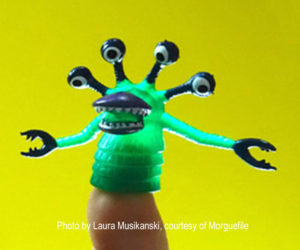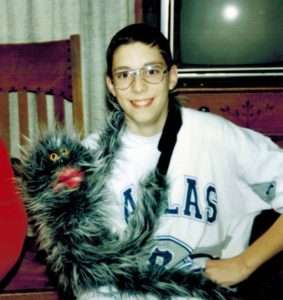 My Personal Puppet Ministry saga continues! If you missed my previous post, you can catch up here: Puppet Grace
My Personal Puppet Ministry saga continues! If you missed my previous post, you can catch up here: Puppet Grace
Click on the link below to listen to an MP3 recording of today’s post.
The transcript follows, with a few photos for illustration.
Audio: Picking a Puppet Pal-Puppet Types
Picking a puppet pal for personal puppet ministry
Thanks for joining me on my latest ministry adventure. I introduced the concept of personal puppet ministry in a previous post. This post will cover the first practical steps toward starting my personal puppet ministry.
Personal puppet ministry = one puppeteer + one puppet pal + an audience.
I’ll round up the audience later, when I’m ready to perform. For the moment, here I am, the one puppeteer. But the other half of the equation is missing. Where’s my puppet pal?
I don’t have one, not yet. So the next step for me is to pick and personalize a puppet pal to perform with. On to the puppet pal auditions!
Let’s consider some types of puppets that are out there and talk about design choices that might work well for my personal puppet ministry, or not so much.
One of the beauties of personal puppet ministry is that it’s tailored to each individual puppeteer. I’m free to make whatever choices work for me and my audience. And you can do the same for yours.
But keep in mind one fundamental for every personal puppet ministry: You want a puppet pal whose design and personality will help to establish a relationship with you and a relationship with the audience. Of course, the relationship is fictional, but it’s really important just the same. The relationship is what draws in your audience, to care about whatever issue you and your buddy are chatting about, so that your ministry message gets across.
Two big factors in a puppet’s design can really impact your ability to build those relationships:
Size and separation
First, the puppet’s size. It’s tough to build a relationship between your audience and your puppet pal if he’s too small for the audience to see him.
Finger puppets and stick puppets

Take finger puppets and popsicle stick puppets, for example. They’re easy to make in a whole slew of characters. They’re easy for the youngest puppeteers to use, too. But they’re too small for my personal puppet ministry. You might get away with a tiny puppet pal if your audience is a handful of kids sitting right in front of you, or if a close-up view of your performance is broadcast on a TV screen. But I need a puppet that people in my church can see from at least ten or fifteen pews away.
So, for my personal puppet ministry, a small stick puppet or finger puppet just won’t do the job. Next!
Marionettes
The second factor is separation between you and your puppet pal. It’s tough to portray a close buddy relationship if the two of you are physically far apart.
This is where marionettes fail my personal puppet ministry test. Let me explain why.
Marionette characters are puppets that have a full head-to-toe body suspended from almost invisible strings. The puppeteer holds the marionette upright and moves it around by manipulating sticks attached to the top of the strings.
For example, my son, Jeff, got a furry, fluorescent orange, long-necked bird marionette for Christmas one year. (Thank you, Uncle Doug and Aunt Donna!) Jeff named the marionette Bonnie. As you can see in the photo, Bonnie has one string attached to her head, one attached to her back, and one to each of her feet.

Now, Bonnie is a good two feet tall, so she certainly is big enough, and her orange fur is bright enough, for the audience to see her perfectly well. Possibly even with the lights off! So that angle is fine.
But the second relationship problem I mentioned is a deal-breaker. Separation.
Do the math. If Bonnie’s face is hanging two feet above the ground, and my face is more than five feet above the ground, that’s a three-foot separation, much farther apart than good buddies having a personal chat would be. My arms would have to be skyhooks to hold Bonnie high enough to make a conversation between the two of us look believable. My muscles are cramping just thinking about it!
Theoretically, I could find a shorter marionette and use a platform so her feet wouldn’t dangle in space. But I don’t want to monkey around with a platform everywhere I go to perform with my pal.
Besides that, between arthritis and all-around klutziness, my hands don’t have the strength and dexterity to operate the sticks effectively or comfortably to move a marionette. That’s one of those personal factors I need to take into account for my particular puppet choice.
Bottom line: It’s a no for me. Next!
Ventriloquist dummies
When it comes to believable conversation between a puppeteer and puppet pal, it’s hard to beat a classic dummy, also called a ventriloquist figure. A dummy often looks like a little person, constructed of rigid materials, with a full body and a head that turns, and a mouth that drops open and shut. Some have eyes that roll or blink and eyebrows that flick up and down. Those moveable features are controlled by the puppeteer with mechanical gizmos inside the figure’s body. You can practically forget it’s a dummy, not a living creature, especially when it “talks.”
Of course, it’s actually the puppeteer’s voice you hear when the dummy speaks. But dummies are usually operated by ventriloquists. Ventriloquists are puppeteers who can throw their voice, which is a jazzy way of saying they can vocalize for their dummies without moving their own lips. This makes the illusion of conversation that much more convincing. And conversation between buddies is huge in a personal puppet ministry.
Here’s a link to my ventriloquist friend Frank Westcott with his pal Bucky, in action with their personal puppet ministry:
Frank and Bucky talk about Sin
If you want to see an astounding, clean, contemporary ventriloquism act, check out this video clip of Darci Lynne Farmer, a young puppeteer who won the America’s Got Talent TV show in 2017 and took second place in the AGT Champions face-off this year. Darci Lynne even sings in her puppet’s voice, without moving her mouth at all!
Puppeteers who master the art of ventriloquism are truly amazing, and you could certainly choose to go that route. But a simpler performance style would suit my personal puppet ministry better. Technically, I could use a ventriloquist dummy without being a ventriloquist, but seeing my lips moving probably would disappoint the audience’s natural expectations for a ventriloquist dummy. Besides, a dummy is more expensive and more complicated to operate than my personal puppet ministry needs.
So … Next!
Hand puppets

Last, but not least, let’s look at hand puppets. This is a broad category of soft puppets that fit over the puppeteer’s whole hand. They range from super-simple sock puppets to sophisticated hand-and-rod models like the Muppets.
—Hand-and-rod puppets
Hand-and-rod puppets are a nice choice, very expressive. The rods are long, thin sticks attached to the puppet’s wrists. You slide one hand into your puppet’s body and up into the head to work its mouth, and your other hand holds the rods to control the puppet’s arm movements. (If you watched the Darci Lynne Farmer video clip above, you may have noticed that Darci performs with hand-and-rod puppets. She handles the rods expertly, doesn’t she?)
Like I said, hand-and-rod puppets are a nice choice … but not for me. Remember my klutzy, arthritic hands? Well, holding and manipulating those rods is a trickier maneuver than I want to have to deal with. And unless I miraculously sprout a third hand, I wouldn’t have one free to hold a prop or a script or shake hands with people. So a hand-and-rod puppet might be perfect for many puppeteers, but it wouldn’t be my top choice.
On the other hand (yeah, I went there), I want something more structured and detailed than a basic sock puppet. Looking for a happy medium …
—Critter puppets
A different variation on the hand puppet, the critter puppet, might fill the bill.

Jeff’s puppet pal was a critter puppet named Clyde. Picture a dark gray Oscar the Grouch. If you pulled Oscar the Grouch out of his trash can and he had long furry arms that wrapped around your neck and long furry legs that wrapped around your waist, that would look a lot like Clyde.
Clyde was a great pal for Jeff. A critter puppet would work well for me, too. Having wraparound arms instead of rods would be easy to perform with. Clyde was lightweight, easy to walk around with. Easy to transport and store, too. Just roll him up and stow him away. The only down side is that I’d kind of like to have a unique pal, not one so similar to my son’s.
—Other hand puppet choices
To have a really one-of-a-kind puppet pal, I could build my own hand puppet from scratch. There are patterns and instructions for various types of hand puppets on the internet. (Check my Puppet Ministry Resources page for links you might find useful in your puppet search.)
Or I could convert a stuffed animal toy into a hand puppet, by opening a pocket inside it for my hand. I think I’d enjoy an animal pal rather than a human character, so this idea appeals to me.
Narrowing it down
I’ve narrowed my choices down to the hand puppet category, but there are still multiple variations to choose from. Hmm … I need to give this decision plenty of thought and prayer. Stay tuned!
Your thoughts?
What puppet style do you like best (as puppeteer or as audience)?
Do you think your puppet would work well for personal puppet ministry? What features of your puppet’s design would be a plus, and which features would be a minus?
Would you consider making a puppet, or would you rather buy one ready-made?
Please share your ideas and suggestions in a comment. ♥
Next post in this series: Picking a Puppet Pal, Part 2

